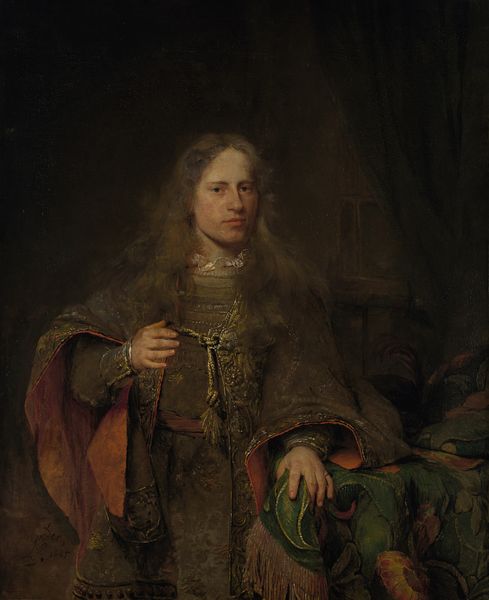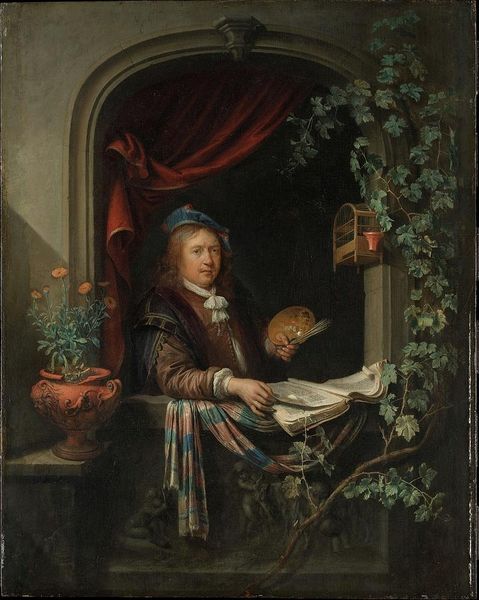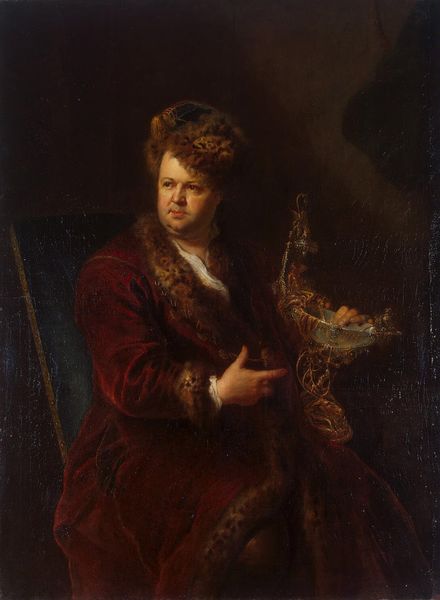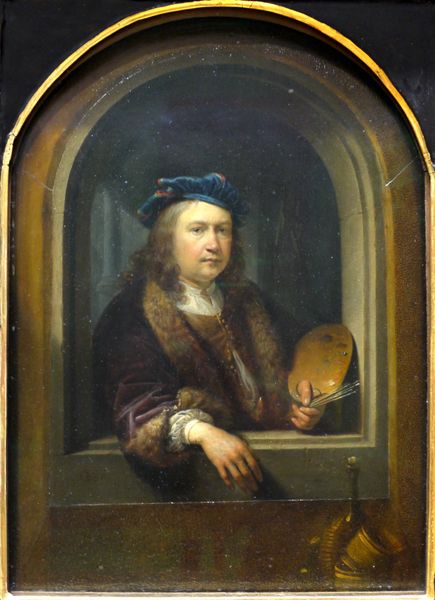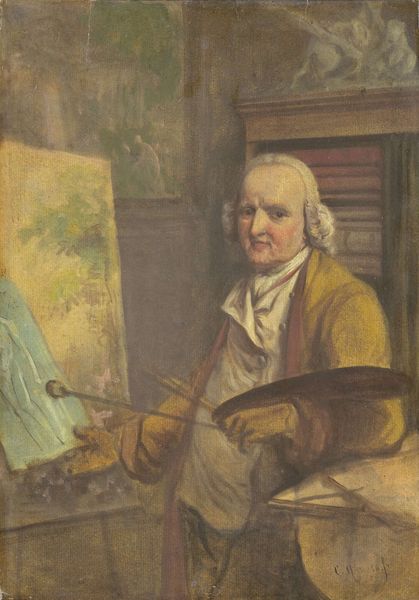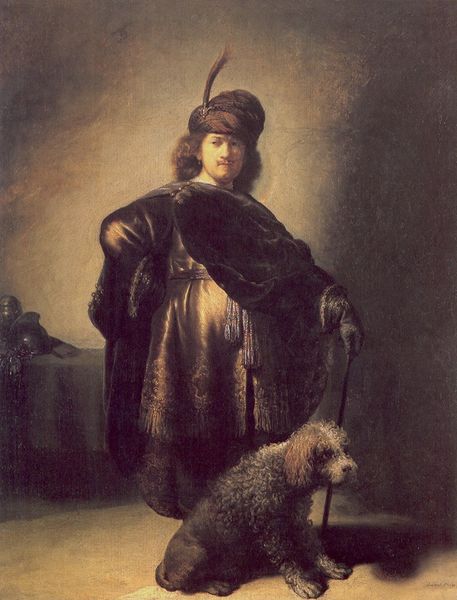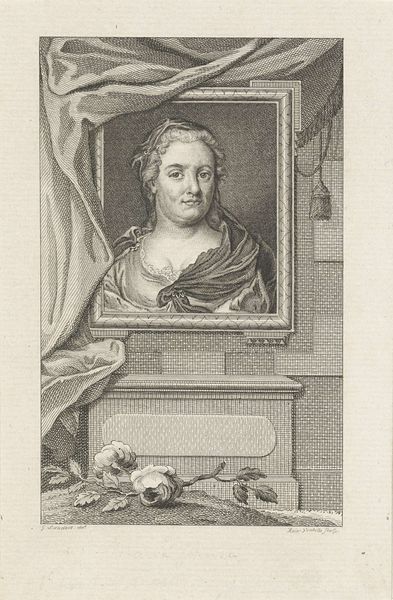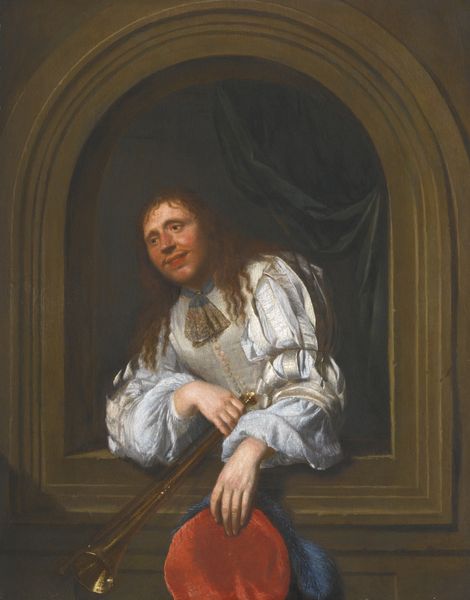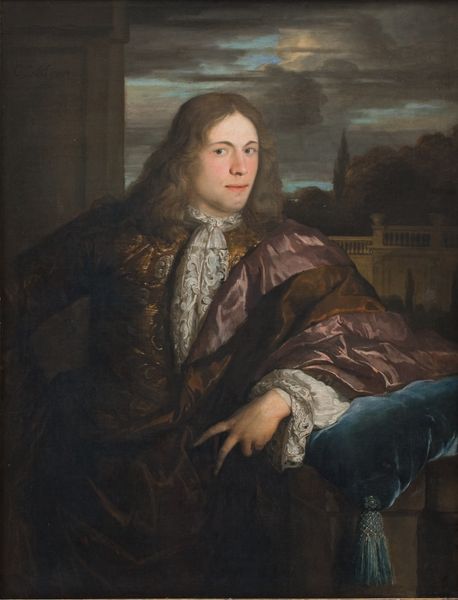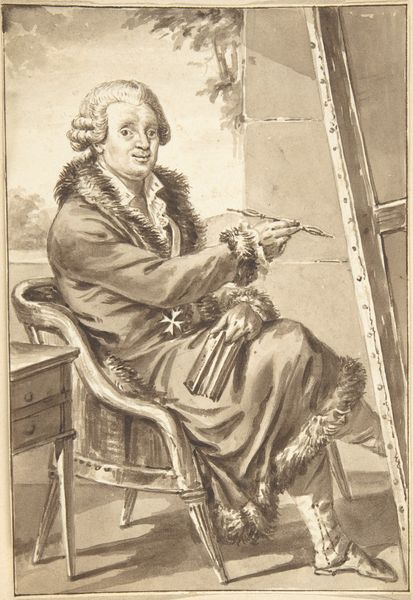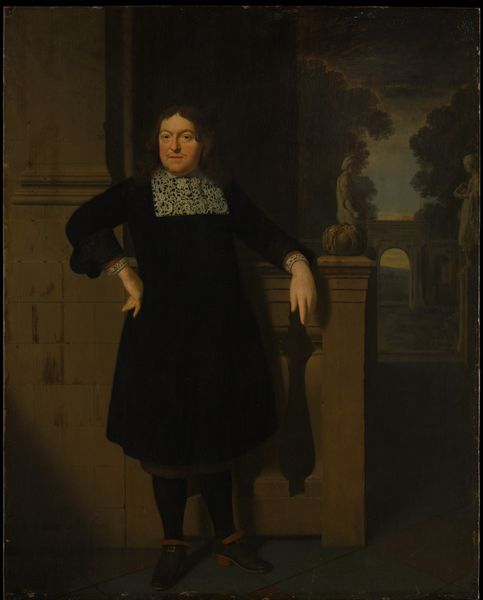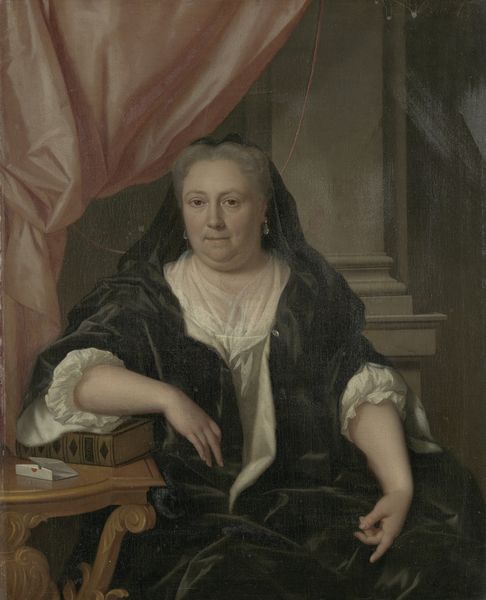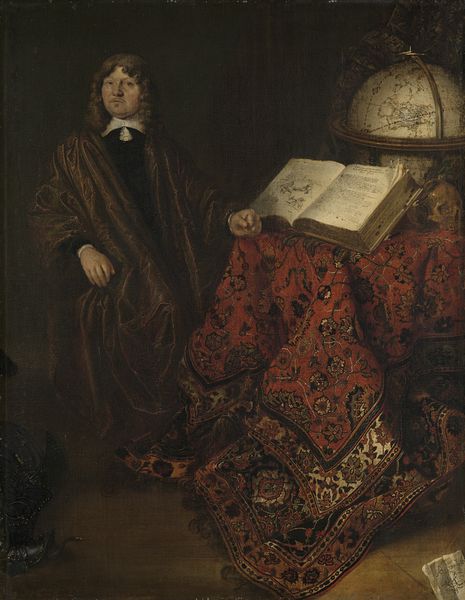
oil-paint
#
portrait
#
baroque
#
dutch-golden-age
#
oil-paint
#
oil painting
#
genre-painting
#
realism
Dimensions: height 25.5 cm, width 20 cm, height 34.8 cm, width 31 cm, depth 3 cm
Copyright: Rijks Museum: Open Domain
Curator: Looking at this oil on canvas, "Portrait of a Man with a Watch," dating back to 1688 and attributed to Pieter van Slingelandt, the overwhelming sense for me is one of lavishness. The drape, the robe, the very clear signs of wealth… Editor: Indeed. There is an undeniably striking accumulation of signs designating status. And yet, at its core, it's the intricate application of the paint itself that fascinates me. Observe how van Slingelandt renders each texture and object, almost photographically, emphasizing the labor involved in its creation. It showcases a self-conscious craftsmanship, where material realism mimics and, thus, heightens the reality it captures. Curator: You are right, this isn't just about surfaces; it’s also a very calculated presentation of masculine identity during the Dutch Golden Age. A man's worth, his temporal awareness almost becomes a display item in and of itself. The watch, a novel object, and its relation to controlling or accounting for labor. Editor: Exactly. He sits almost framed by this rather decorative architectural element, casually posed but very aware, it seems, of his position in the world. The subtle carving depicting battle scenes at the edge of his table feels telling. We see him possessing this miniature, sculpted symbol of social conflicts… which he benefits from economically but is insulated from, personally. Curator: And that tension underscores a society grappling with expanding trade and evolving power dynamics, certainly…it’s amazing what a little clock can imply! Editor: Yes, but isn’t that art's perpetual dance – revealing the personal within the societal framework? Looking at van Slingelandt's detailed execution, the tangible process becomes integral to our historical understanding. Thank you. Curator: My pleasure, thank you.
Comments
No comments
Be the first to comment and join the conversation on the ultimate creative platform.
